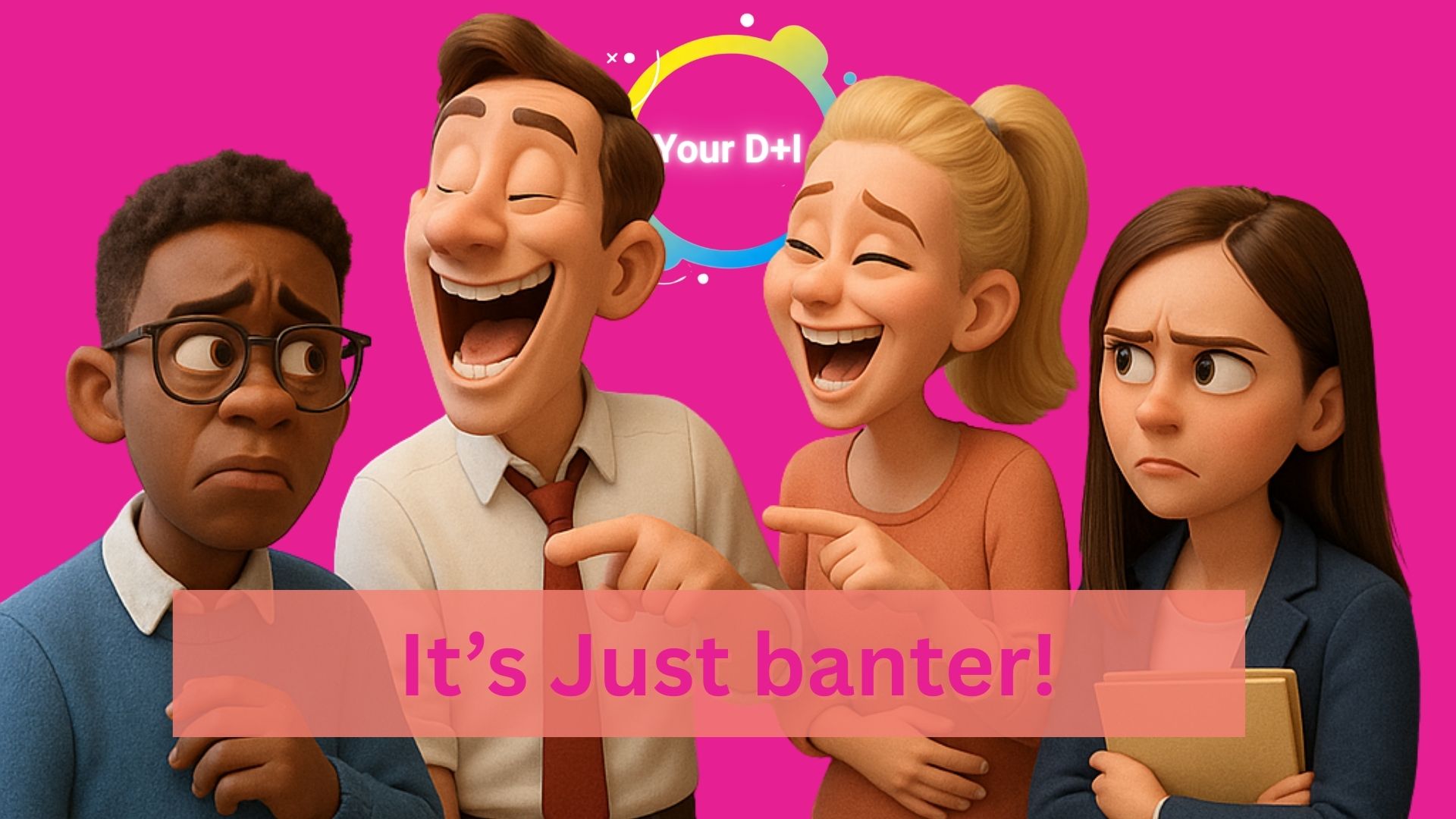“It’s Just Banter”… Until It Isn’t: Workplace Banter, Culture & Risk
Banter. The great British workplace glue… or the invisible wedge that quietly pushes people out?
We love a laugh (me included), but there’s a line between humour that bonds and “jokes” that bruise. The problem? In too many teams, the line is vague, constantly shifting, and policed by the loudest voice in the room.
This post breaks down why “it’s just banter” isn’t a defence — it’s a red flag. We’ll cover the real costs, the UK legal risks, the culture ripple effects, and what managers can do this quarter to fix it. And yes: if you’ve got a Christmas work night out in the diary, read on.
What counts as workplace banter?
Banter can be playful and mutual. But it stops being harmless when:
It targets identity (e.g., gender, race, disability, sexuality, faith, age, class, accent).
It’s one‑way (power punching down) or someone keeps opting out.
People feel they have to laugh along to “fit in” or protect career prospects.
“We do this with everyone” is used to normalise bullying or harassment.
Bottom line: intent is not impact. If someone is uncomfortable, it matters — regardless of intentions.
The real costs of toxic banter at work
Retention & recruitment: People don’t stay where they’re the punchline. Replacing a leaver typically costs ~6–9 months of their salary.
Productivity: Psychological safety is the #1 predictor of high‑performing teams. If folks are bracing for the next “joke”, they’re not innovating.
ER cases & legal risk: Banter is often the breadcrumb trail in harassment and bullying claims. Tribunal awards and reputational damage can dwarf SME budgets.
Brand & clients: One poor‑taste video from the Christmas party can undo a year of careful reputation-building.
Banter and UK law: Why “I didn’t mean it” won’t save you
Under the Equality Act, harassment is unwanted conduct related to a protected characteristic that violates dignity or creates a hostile environment. You don’t need to be the direct target to be affected. “Everyone knows we were joking” is not a legal defence.

Red‑flag phrases that normalise harmful banter
“It’s just banter; don’t be so sensitive.”
“We rip into everyone equally.”
“If you can’t take a joke, you don’t fit the culture.”
“We only say it outside the office.” (Spoiler: work WhatsApp counts.)
If you hear these, you’ve got a culture problem — not a comedy style.
How managers can handle banter at work: Four key moves
Set the boundary out loud.
Share a plain‑English statement: what’s OK, what’s not, and what to do if a line’s crossed. Repeat it before socials and big events.
Intervene in the moment.
Try: “Hit pause — that could land badly. Let’s keep it respectful.”
Or: “I know you meant it as a joke, but that targets X — that’s off‑limits here.”
Protect the out‑group.
If someone opts out (“Not for me”), back them: “Opt‑outs are respected here.” Don’t let the room turn on them for “killing the vibe.”
Close the loop.
After an incident: check‑in with those affected, note it, and if needed escalate. Signal learning to the team without breaching confidentiality.
Quick guide for your Christmas work party
Pre‑brief: Send a 2‑liner on expected conduct and safe travel plans.
Sober stewardship: Have two named managers staying sober/steady.
Buddy system: Encourage people to leave together; expense cabs if needed.
WhatsApp rules: No posting pics/vids without consent; no pile‑ons.
Next‑day check‑in: 10‑minute huddle: thanks, reminders, any concerns → route to HR.
What healthy workplace humour looks like
People laugh with, not at.
In‑jokes don’t depend on identities or stereotypes.
New joiners and quieter folks are part of the fun, not the fodder.
Anyone can say “not cool” without social penalty.
Try this team exercise (5–10 minutes)
Ask: “What’s a joke you might tell at home but wouldn’t at work — and why?” Then define your team’s red lines together. Capture them in a one‑pager and revisit quarterly.
FAQs: Workplace Banter & Culture
Is workplace banter illegal?
Not always. But if it relates to a protected characteristic (like gender, race, disability, age, sexuality, religion) and creates a hostile environment, it can qualify as harassment under UK law.
How can managers stop harmful banter?
By setting clear boundaries, intervening early, protecting people who opt out, and following up after incidents.
What’s the difference between banter and bullying?
Banter is mutual, equal and respectful. Bullying is one‑sided, unwanted and often tied to identity or power. Intent doesn’t erase impact.
Want help tackling banter at work?
I run “It’s Just Banter: Culture, Humour & Harm” — a fast, practical session for teams and managers. We map your risk points, set shared boundaries, and practice real‑life interventions (without killing the craic).
Format: 60–90 minutes, online or in‑person
Includes: Manager scripts, reporting routes, comms templates for events
Bundle: Add our Christmas Party Guide and Inclusion Detox Health Check (30‑day reset for SMEs)
Book a chat to get your team ready for Q4.
Handy scripts for managers
Call‑in (light): “I know you’re having fun, but that lands on a stereotype — let’s skip that.”
Call‑out (firm): “Stop. That’s not acceptable here.”
Bystander support: “Thanks for flagging — you did the right thing. I’ll handle it.”
Aftercare check‑in: “You looked uncomfortable earlier. Want to talk it through?”


